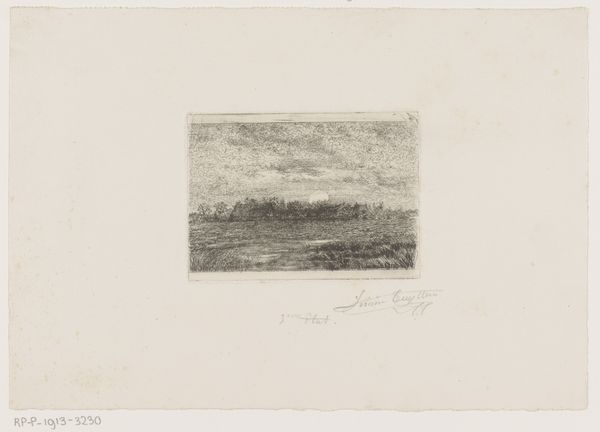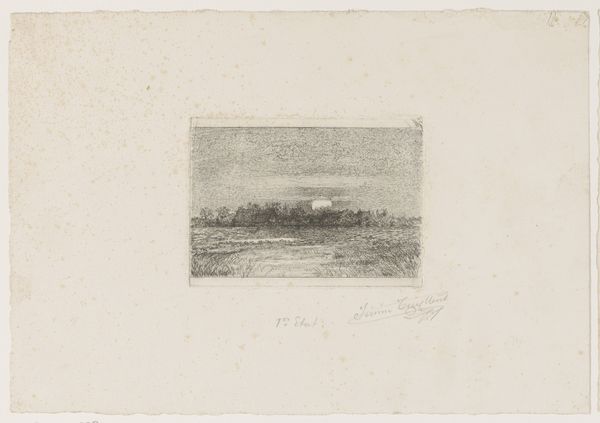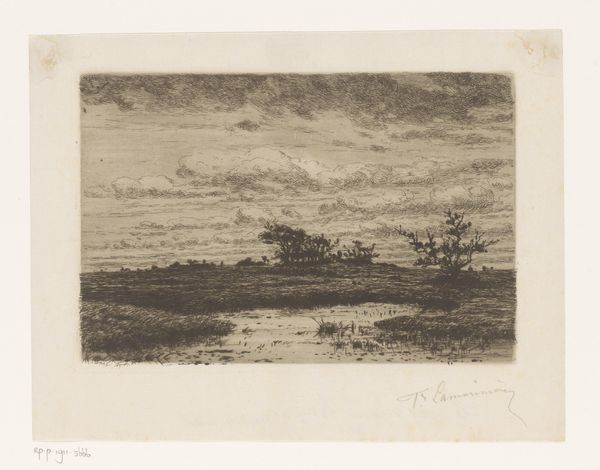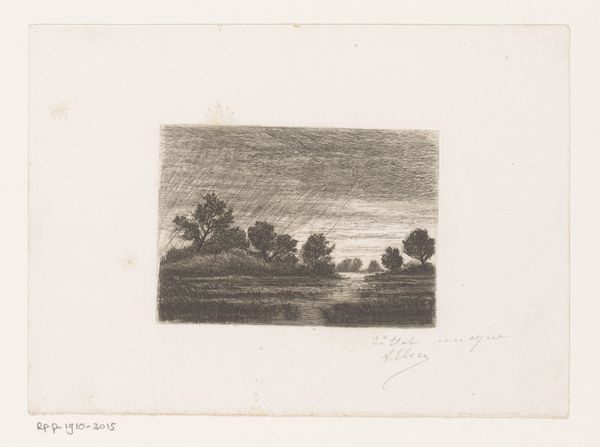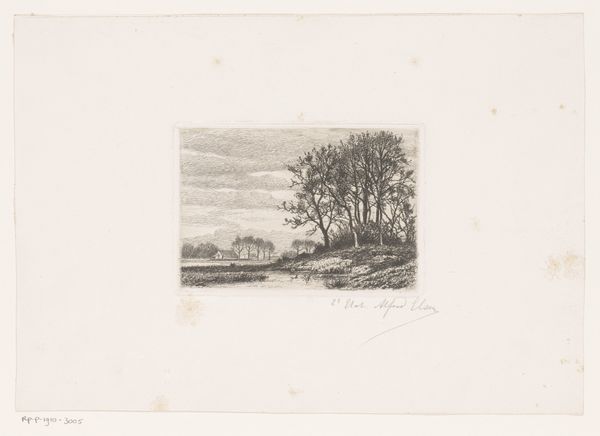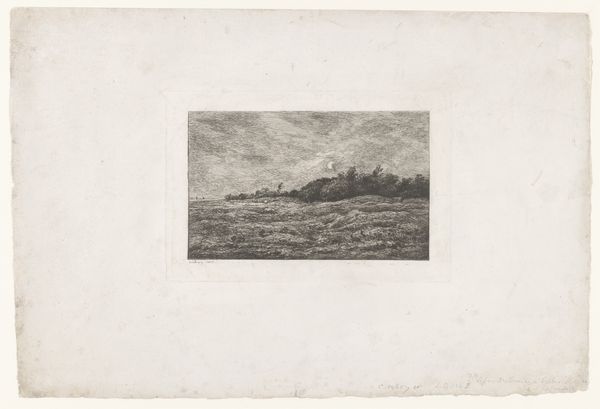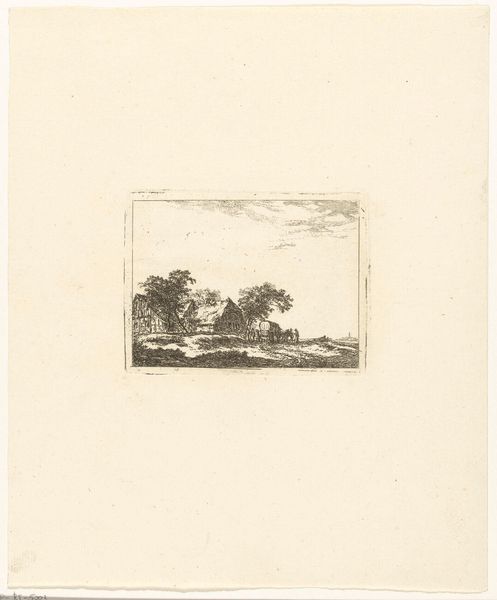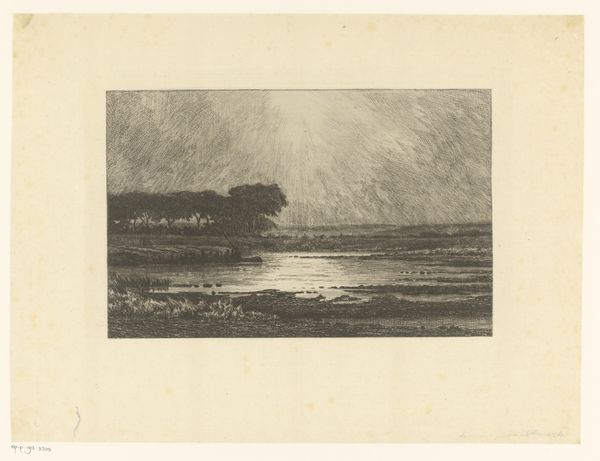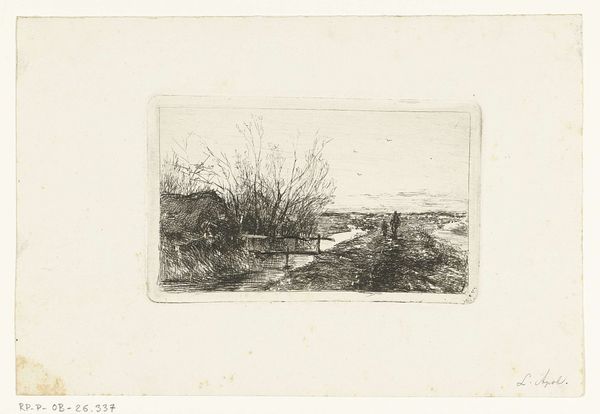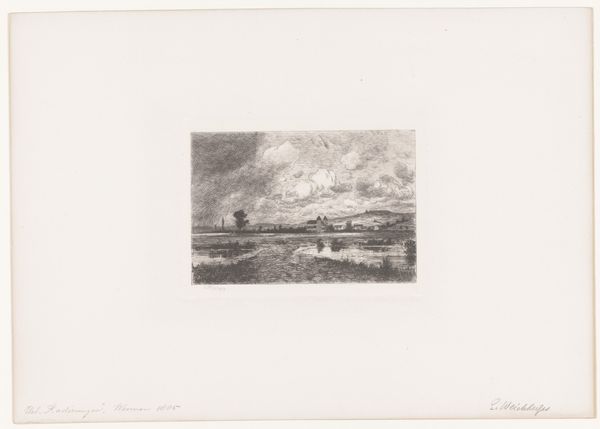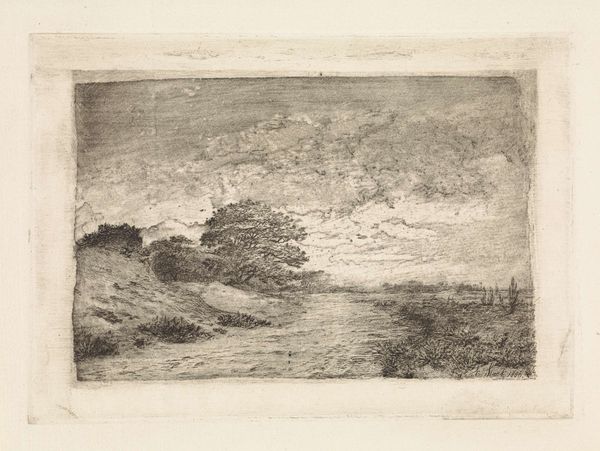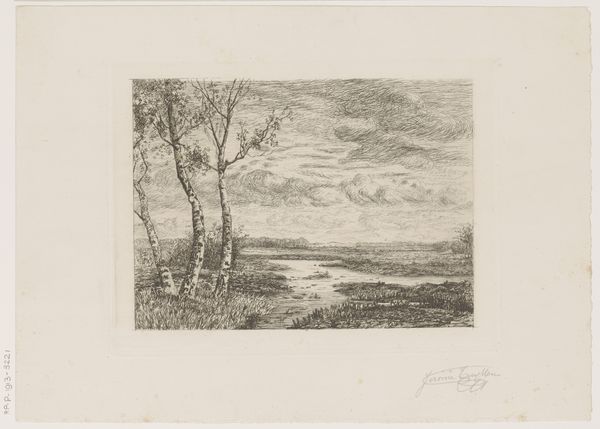
print, etching
#
dutch-golden-age
# print
#
etching
#
landscape
#
realism
Dimensions: height 50 mm, width 85 mm
Copyright: Rijks Museum: Open Domain
Editor: Here we have Louis Apol's "Vaart met zeilboot," created sometime between 1860 and 1936. It's a print, specifically an etching, and it's currently held at the Rijksmuseum. There's a beautiful stillness to this piece; the reflection of light on the water is very compelling. What do you see in it? Curator: It is primarily a formal exercise in tonality and texture. Note how Apol uses the etched lines to delineate space. The density and direction of the lines create contrasting values. How does this structured arrangement affect the piece? Editor: I see how the lines create depth, with more detail in the foreground and a fading horizon line. So, it's not just about what is depicted, but also about how he depicted it through etching techniques. Curator: Precisely. Consider also the composition. The arrangement of dark and light shapes dictates how we navigate the landscape, drawing the eye into a harmonious arrangement. Do you observe any deviations from an absolutely mirrored structure, any asymmetry which brings our vision into disharmony? Editor: Well, the vegetation on the right is more dense, isn't it? I guess it prevents the composition from becoming too rigid. Curator: The slight imbalance invites a dynamism. Furthermore, this etching utilizes various patterns which contrast smooth, reflective water with the wild strokes of foliage. It all culminates in Apol's personal manipulation of graphic vocabularies, creating structure in ways that emphasize not the sailboat's function or position in life, but its very construction out of aesthetic tension. Editor: I understand now how the formal aspects create a unique experience. Curator: Indeed, the formal structure dictates everything from the sensation of the landscape to our very ability to witness the interplay between line and surface. It is form itself which contains the totality. Editor: Thank you, I hadn't considered the balance of visual pattern across it.
Comments
No comments
Be the first to comment and join the conversation on the ultimate creative platform.
